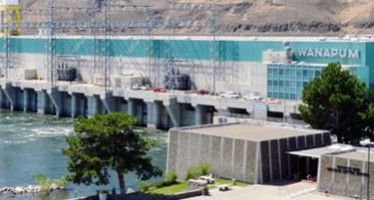CalPERS’ divestment goals in crosshairs as coal stocks soar
 SACRAMENTO – A newly released report from the California Public Employees’ Retirement System confirms that, fulfilling the Legislature’s directive to divest from coal-related investments, the pension fund has now largely exited from coal stocks. But as news reports this week suggest, this “socially responsible” investment policy has come at a price, as coal stocks soar under the Trump administration’s fossil-fuel-oriented energy policy.
SACRAMENTO – A newly released report from the California Public Employees’ Retirement System confirms that, fulfilling the Legislature’s directive to divest from coal-related investments, the pension fund has now largely exited from coal stocks. But as news reports this week suggest, this “socially responsible” investment policy has come at a price, as coal stocks soar under the Trump administration’s fossil-fuel-oriented energy policy.
The Public Divestiture of Thermal Coal Companies Act of 2015 required CalPERS to “identify, engage and potentially divest from companies meeting the definition of ‘thermal coal companies.’” The pension fund was directed to do so “consistent with its fiduciary responsibilities,” providing some wiggle room for the fund, whose primary duty is to maximize investment returns to make good on its public-employee pension obligations.
Nevertheless, CalPERS promptly identified two dozen publicly traded companies that generate at least 50 percent of their revenue from mining thermal coal, as required by the law. As the recent report explains, three companies adapted their business model and redirected their investments toward clean energy. As such, they were exempt from divestment. CalPERS had no holding in eight other companies identified under the act.
But 14 companies “failed to indicate applicable business plan adaptations, or failed to respond to CalPERS engagement efforts and were subject to divestment,” according to the report. As the Sacramento Bee explained, “stocks for 13 of the 14 companies are worth more than they were a year ago when the pension fund was divesting from the industry.” The shares of one of those firms were trading at 15 times their April 2016 levels.
There’s little question that the act was designed to achieve a social goal, rather than one related to increasing CalPERS’ investment returns. “Coal combustion for energy generation is the single leading cause of the pollution that causes global climate change,” said the bill’s author, Sen. Kevin de Leon, D-Los Angeles, as quoted in the Senate bill analysis. He added that coal is “a leading cause of smog, acid rain, and toxic air pollution” and that “most U.S. coal plants have not installed these technologies.”
CalPERS’ investment staff tends to oppose socially oriented investments, but the CalPERS board has the final say. The issue was debated at the CalPERS Board of Administration meeting in May. The Sacramento Bee reported on union officials who criticized the policy at the board meeting. “We cannot afford to lose funding for law enforcement officers in exchange for a socially responsible investment policy,” said Jim Auck, treasurer of the Corona Police Officers Association.
This isn’t the first time that there’s been tension between the fund’s politically oriented investment goals and its desire to increase investment returns. At a board meeting last year, CalPERS investment officials argued for an end to a 16-year ban on tobacco-related investments made by the system’s own investment officers. (Tobacco investments by outside firms were still allowed.) Because tobacco stocks had rebounded since 2000, news reports estimated that the pension fund had lost about $3 billion because of that decision. The fund’s total investments are valued at more than $300 billion.
Instead of following the investment team’s advice, the CalPERS board continued to ban tobacco investments and also decided to divest about $547 million in tobacco-related investments handled by outside firms. That decision also was based on social goals. Advocates for tobacco divestment argued that CalPERS ought not invest in firms that sell deadly products.
At the time, the tobacco-divestment decision was particularly controversial because CalPERS faced investment returns of a measly 0.61 percent. Now, with CalPERS’ latest returns showing a robust 11.2 percent gain, it makes continuing with the coal divestment plan – and other socially oriented investment strategies – an easier option to pursue.
Regarding coal, CalPERS isn’t the only state agency to pursue divestment. Last summer, California Insurance Commissioner Dave Jones launched his Climate Risk Carbon Initiative, which called for any insurance companies that do business in California to divest “voluntarily” from most of their thermal-coal investments. The state vowed to publicize the names of companies that didn’t comply and ramped up mandatory reporting requirements.
Insurance commissioners regulate insurers to assure they have the resources to pay any claims. Yet the department’s divestment request clearly had a social (and some say political) goal. Jones justified it by arguing that such investments put the companies at risk. “As utilities decrease their use of coal and other carbon fuel sources … investments in coal and the carbon economy run the risk of becoming a stranded asset of diminishing value,” he said in a statement.
But critics of the policy, including a 2016 study by this writer, note that insurers are invested in extremely conservative positions, mostly in fixed-income bonds, and that even the insurer with the largest percentage of coal-related investments (TIAA-CREF) had only 1.76 percent of its total assets in such holdings. Furthermore, the value of the stocks already reflects the well-known uncertainties that the insurance commissioner raised. Jones’ office argued, in response, that “since 2011, coal prices, cash flows, and company valuations have fallen sharply thus adversely affecting and bankrupting numerous coal companies.”
The broad question, especially for CalPERS, is the one raised by the union officials at the recent board meeting: Are the political and social gains of divesting from these industries worth the costs in investment returns?
Chief investment officers “invest for value and don’t appreciate being hamstrung by legislators who don’t know how to manage a diversified portfolio,” said Sen. John Moorlach, R-Costa Mesa, who voted against Sen. de Leon’s divestment act. “I think I’m the only legislator who managed a $7 billion portfolio. And the studies I’ve seen have shown that social investing has produced lower returns.”
Despite the recent good-news returns, CalPERS has an enormous amount of unfunded liabilities – the shortfall in assets to make good on all the long-term pension promises made to government employees. The system is only funded at around 68 percent. This should be of concern not only to the agency, the Legislature and public employees who depend on a CalPERS retirement, but to California taxpayers. Ultimately, they are the ones who will pay for any pension shortfalls.
Steven Greenhut is Western region director for the R Street Institute. Write to him at [email protected].
Steven Greenhut
Steven Greenhut is CalWatchdog’s contributing editor. Greenhut was deputy editor and columnist for The Orange County Register for 11 years. He is author of the new book, “Plunder! How Public Employee Unions are Raiding Treasuries, Controlling Our Lives and Bankrupting the Nation.”
Related Articles
One year later, glitches still plague Covered CA
“Here we go again with the same nightmare as a year ago. [I’m] truly fed up with Covered California’s
Ed funding gets contentious
March 17, 2010 By KATY GRIMES Gov. Arnold Schwarzenegger’s proposal for education funding did not sit well with the Assembly education
Cracked dam shows vulnerability of CA green power grid
California power grid operators learned Friday that Grant County in the state of Washington had implemented an emergency response plan due




